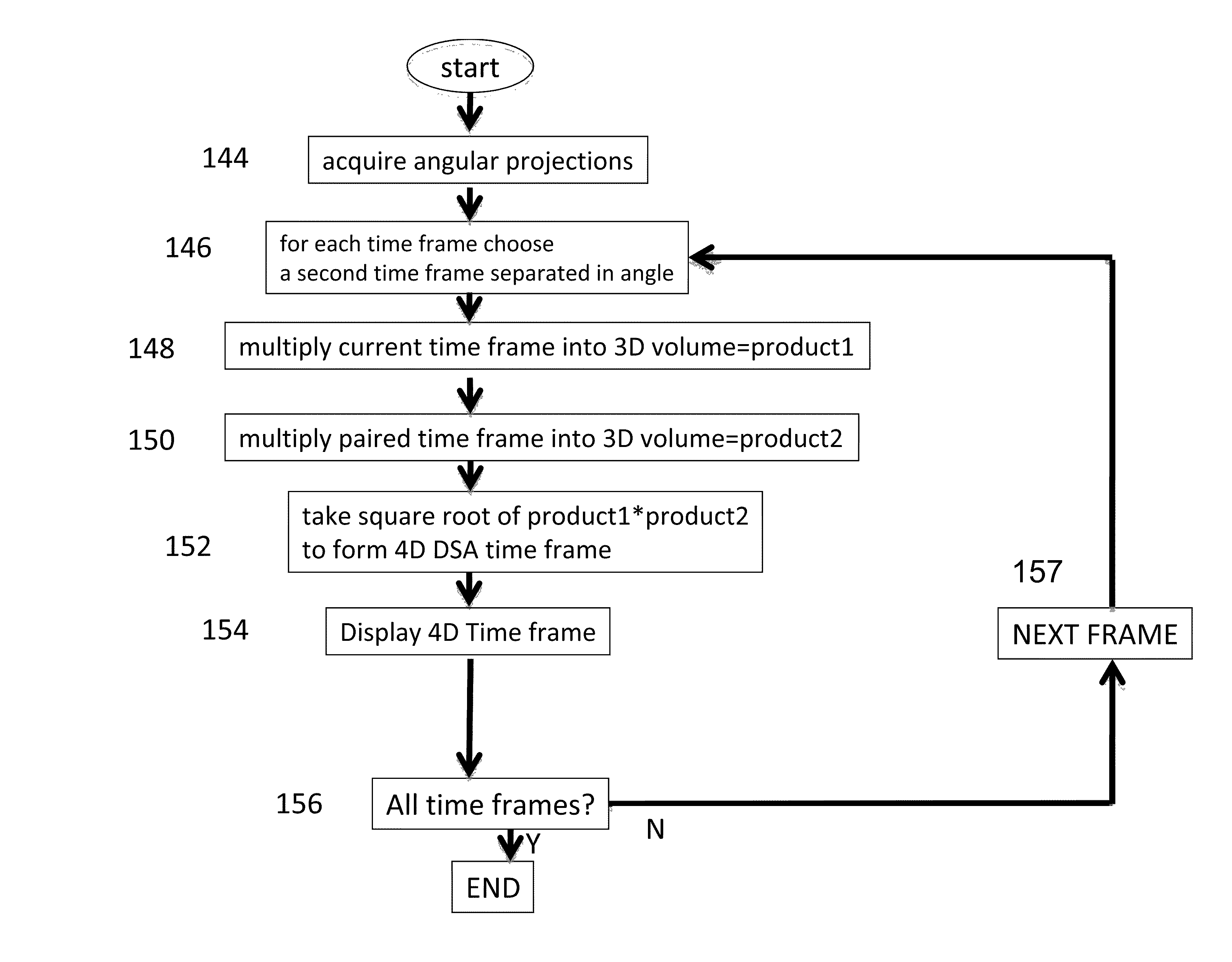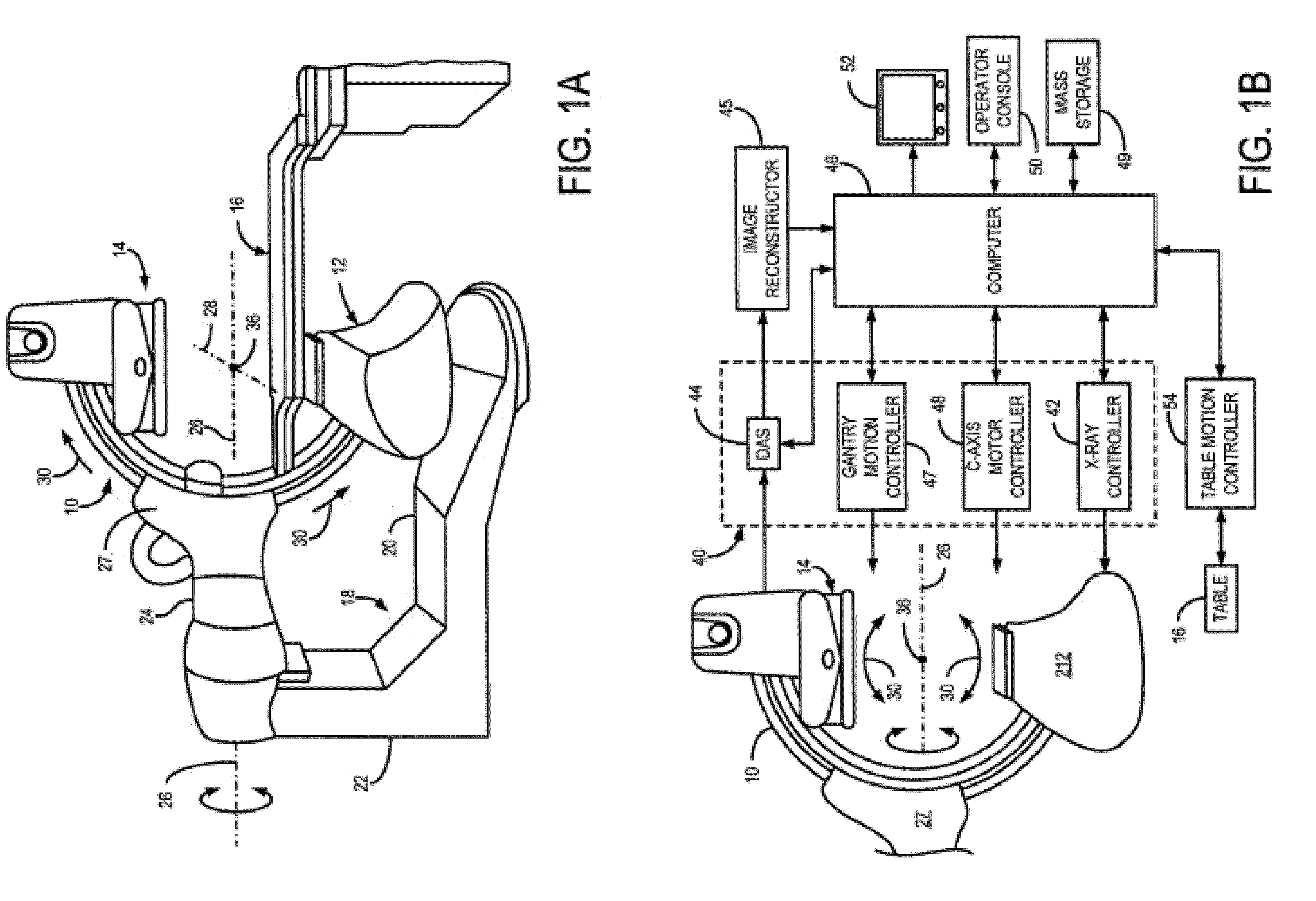System and method for four dimensional angiography and fluoroscopy
a four-dimensional angiography and fluoroscopy technology, applied in the field of angiography, can solve the problems of significant incidence of serious complications, inability to eliminate, and limited post-processing of images, and achieve the effect of removing the effects of time-dependent vascular behavior
- Summary
- Abstract
- Description
- Claims
- Application Information
AI Technical Summary
Benefits of technology
Problems solved by technology
Method used
Image
Examples
Embodiment Construction
[0028]Referring to FIG. 1A, the present invention may employ a rotational x-ray system that is designed specifically for use in connection with interventional procedures. It is characterized by a gantry having a C-arm 10 which carries an x-ray source assembly 12 on one of its ends and an x-ray detector array assembly 14 at its other end. The gantry enables the x-ray source 12 and detector 14 to be oriented in different positions and angles around a patient disposed on a table 16, while enabling a physician access to the patient.
[0029]The gantry includes an L-shaped pedestal 18 which has a horizontal leg 20 that extends beneath the table 16 and a vertical leg 22 that extends upward at the end of the horizontal leg 20 that is spaced from of the table 16. A support arm 24 is rotatably fastened to the upper end of vertical leg 22 for rotation about a horizontal pivot axis 26.
[0030]The pivot axis 26 is aligned with the centerline of the table 16, and the arm 24 extends radially outward f...
PUM
 Login to View More
Login to View More Abstract
Description
Claims
Application Information
 Login to View More
Login to View More - R&D
- Intellectual Property
- Life Sciences
- Materials
- Tech Scout
- Unparalleled Data Quality
- Higher Quality Content
- 60% Fewer Hallucinations
Browse by: Latest US Patents, China's latest patents, Technical Efficacy Thesaurus, Application Domain, Technology Topic, Popular Technical Reports.
© 2025 PatSnap. All rights reserved.Legal|Privacy policy|Modern Slavery Act Transparency Statement|Sitemap|About US| Contact US: help@patsnap.com



